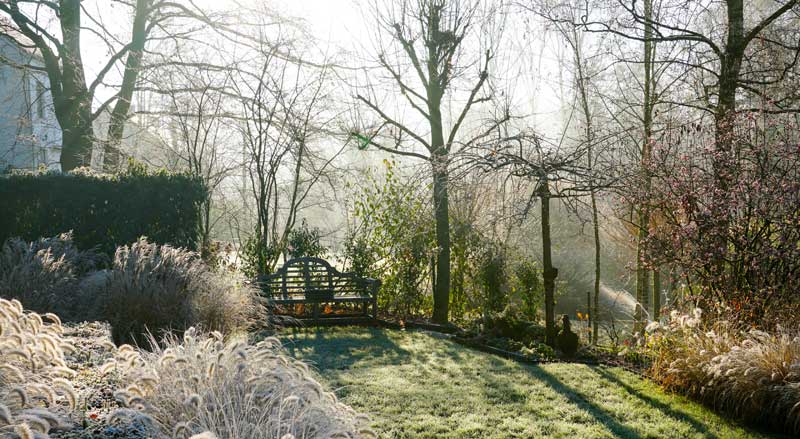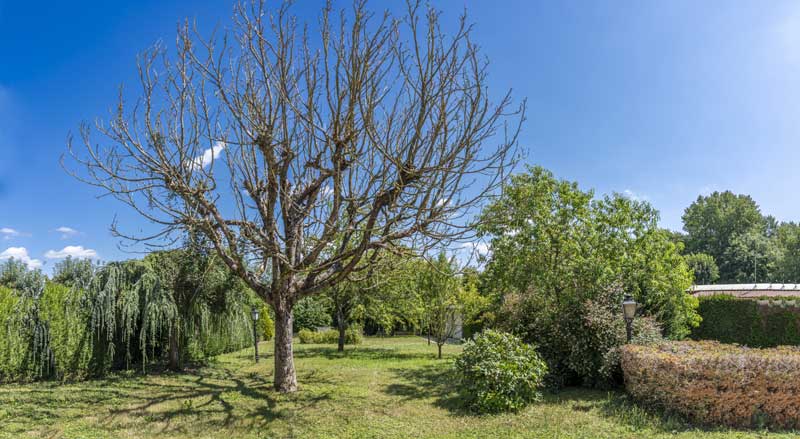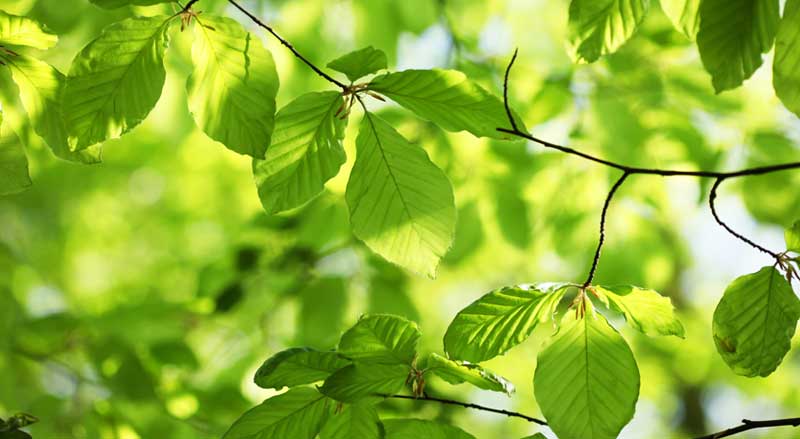Homeowners rarely think of winter as the best time to have garden work done. But did you know that winter can be the best time of year for tree removal?
Sean Lewett, a member of the Tree Care Industry Association (TCIA), writes on TCIA’s blog that winter tree removal can be a “win-win situation for homeowners and our company; the customer receives further discounts since winter is a slower time, and it provides more work for us in the winter at the same time.”
Before we get into the benefits of winter tree removal for your landscape, let’s talk about its benefits for you.
Easier to Schedule and Save Money
In Northern New Jersey, tree care is a seasonal business and tree professionals have more free time in the winter months. That means that your tree care company will most likely have greater flexibility in scheduling your winter job. And they may even have winter discounts in place until the spring rush starts.
Dead Trees Are a Winter Danger
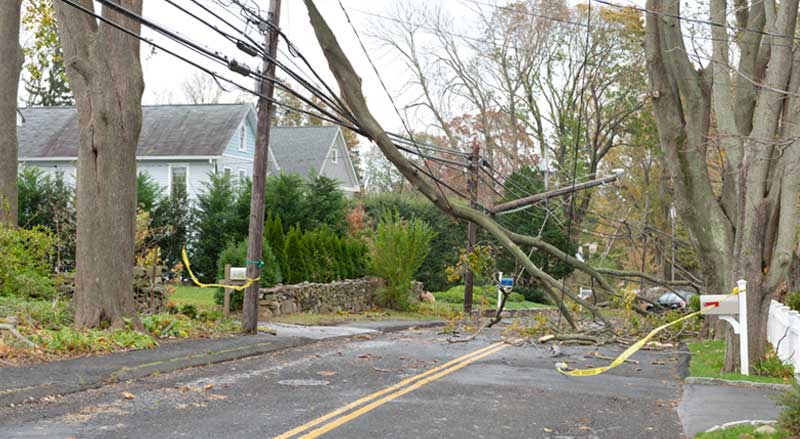
We all love our trees and want to keep them thriving for as long as possible. But a sick or dead tree can be a threat to property, power lines, cars, home, family, and pets–especially in winter.
You can read about preventing, recognizing, and fixing winter tree damage.
A damaged tree is a weakened tree. If a winter storm comes along, large branches are more likely to break off. And the additional weight of snow and ice on fallen branches make them even more dangerous.
Here’s more about protecting your trees in winter and helping your Northern New Jersey trees weather the winter.
Now, let’s get to why winter tree removal is best for your landscape.
It’s Easier to Assess Tree Health in Winter
In the winter, after leaves have fallen, tree professionals can much more easily view the tree’s structure and the individual limbs.
They can closely approach the tree and determine if the tree has a disease that calls for tree removal—or which limbs need to be pruned.
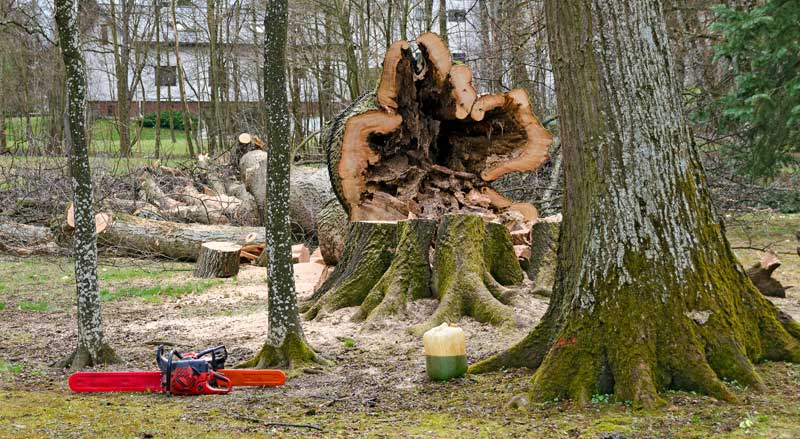
There are many reasons why tree removal is much easier in the winter. For starters, there won’t be other landscapers working in your yard or kids wanting to play outside.
And wintertime tree removal doesn’t have the added complications of having to move branches loaded with leaves.
Tree Disease Doesn’t Spread Easily in Winter
It is much less likely that nearby trees and greenery will be exposed to disease during winter tree pruning or removal.
A dead or damaged tree is likely to have insects or fungi, or both. However, in the winter, these disease-spreading elements are dormant. They are removed from your property along with the dead tree or branches.
Additionally, winter pruning causes less sap production. In the warmer months, more tree sap means more insects—increasing the likelihood of diseases spreading.
A decaying tree in your garden also attracts insects and disease. So be wise and remove trees early to keep your landscape healthy.
Trees Heal Better from Winter Pruning
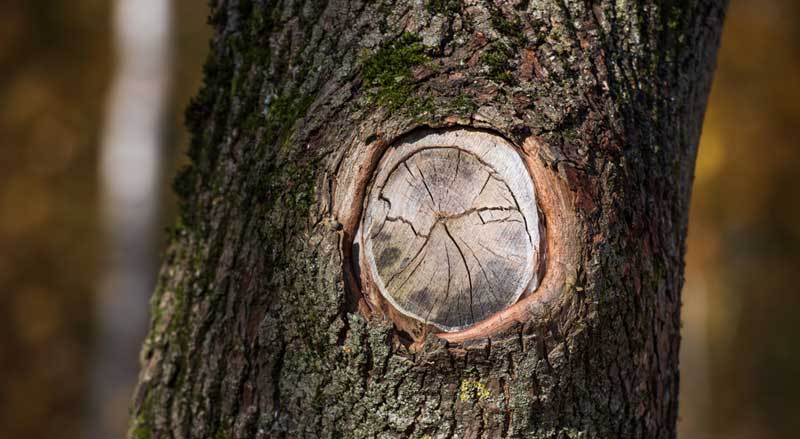
Pruning causes tree wounds; it’s important that pruned trees have the energy to heal quickly. Pruning a tree in the winter leaves it with more available energy to heal faster.
Trees are dormant in the winter. They are busy developing root systems and saving energy for the upcoming growing season.
They’re not putting energy into producing leaves and flowers. Prune in the winter and your tree will have more energy to heal immediately and create lots of blooms in the spring.
Also, an open wound attracts insects and disease. Since these things aren’t around in winter, winter pruning is often more healthful for the tree.
A tree professional can advise you about the best time to prune your specific trees in your location.
Winter Tree Removal Preserves Flower Gardens and Shrubs
In the winter, just about your entire garden is dormant, including trees, shrubs, flowers, and grasses.
But in the spring, flowers and other plants often grow right near your trees. It makes for a beautiful landscape.
However, during tree removal, nearby flower gardens and other greenery can be inadvertently disturbed or trampled. So once again, winter tree removal is preferable.
Also, the removed dying tree won’t have access to nutrients in the soil; the nutrients will be available to fortify other garden plants come the springtime.
Frozen Ground Helps Tree Removal
Removing a tree from frozen ground has three major benefits.
First, frozen ground will help keep surrounding greenery in place; surrounding shrubs, plants, and trees are less likely to be disturbed. This is because it’s more difficult to disrupt frozen ground than softer springtime ground.
Second, tree removal equipment can gain closer access to the trees, making the job easier and less costly.
And finally, it’s much less likely that the soil surrounding other greenery will become compacted from having heavy equipment on it.
When to Remove a Tree Immediately
It’s important to know that winter isn’t always the best time for tree removal. Sometimes you need to do it ASAP.
Act immediately if a damaged tree is at imminent risk of falling or losing some branches. A severely damaged tree can fall or drop branches at any time—it doesn’t need to wait for a storm to cause lots of damage to people and property. Contact a tree expert immediately to assess the situation.
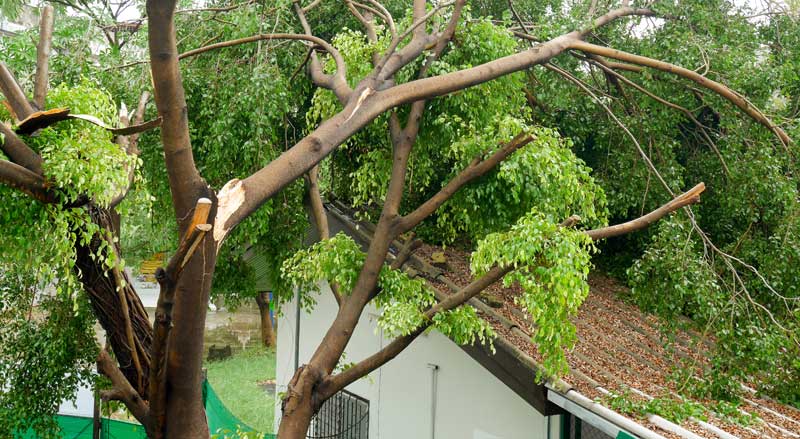
Be on the lookout for:
- A tree that is leaning precariously
- Obviously damaged or diseased branches
- Branches that are touching power lines, your home, or other structures
Contact Trees Unlimited with Your Tree Concerns
Do you have a tree that you suspect is dead, diseased, or seriously damaged?
Our Trees Unlimited tree experts are professional, licensed, and highly trained in tree removal and tree care. We always strive to protect and care for trees. Request an estimate or schedule a free consultation now.

